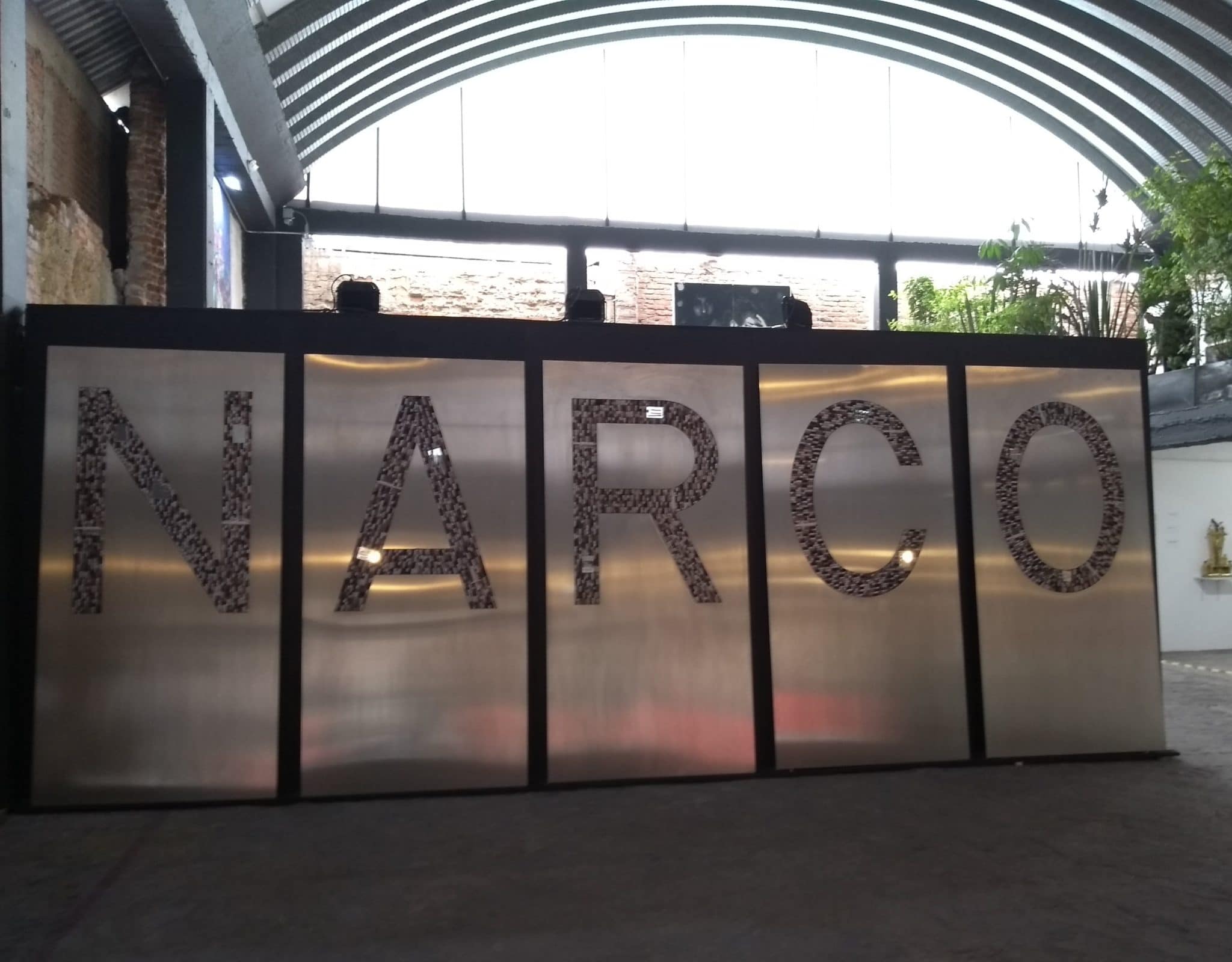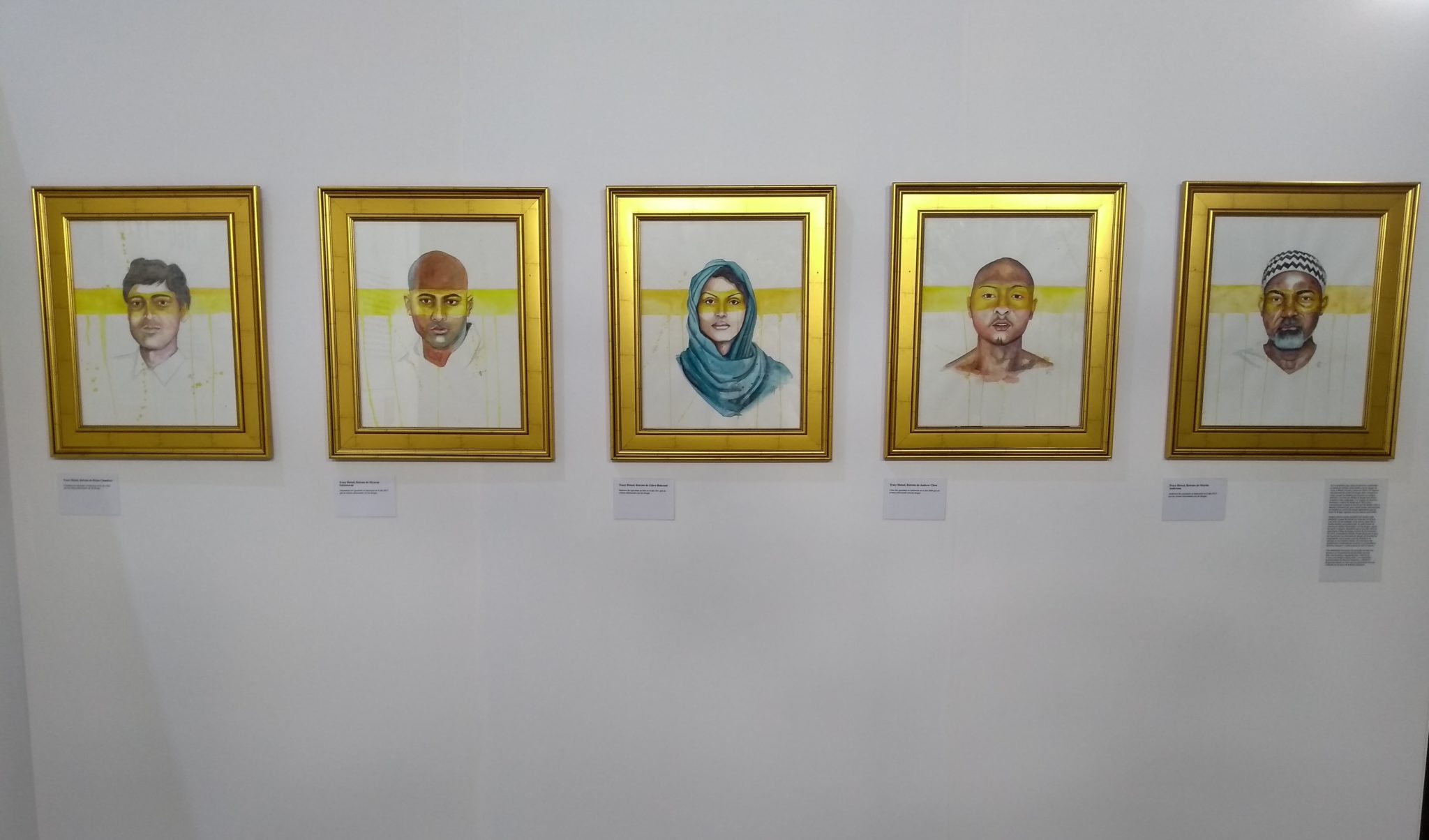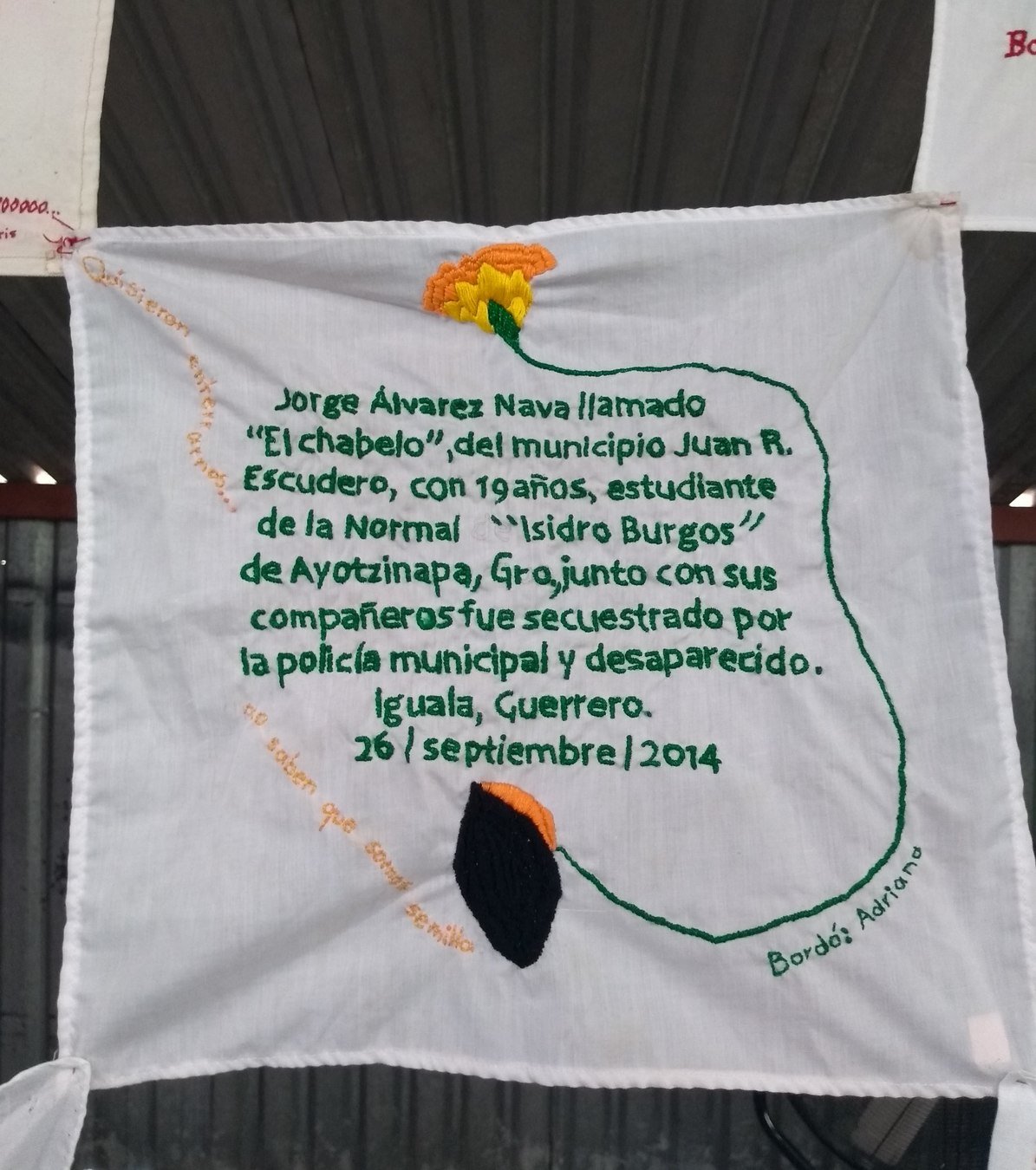
by Victoria Dittmar
Mexico City hosted the Museum of Drug Policy, sponsored by the Open Society Foundations, from May 4 to May 6.* During the museum’s first tour in Latin America, its exhibits reflected on experiences of Mexican drug policy, focusing on the victims of surging violence related to prohibitionist policies and militarization.
The drawings of five faces hung on the wall. One next to another. They depicted the faces of real people who face the same fate: the death penalty. The people were citizens of Indonesia, Iran and Myanmar, countries where drug possession is punished by the death penalty. To the side, an explanatory label recounted how drug prohibition measures began in Mexico to curtail its availability to would-be consumers.
“This museum contrasts the ways in which different countries have experienced drug policies, how they have had to apply prohibition [practices] in different ways,” Aram Barra, a security researcher and an organizer of the museum, told InSight Crime.
Mexico’s version of this pop-up museum, now four years old, included 80 works of art by 26 artists, of whom 16 were Mexican. The first piece visitors see is an enormous, imposing sign saying, “NARCO,” in thick letters filled with capsules, pill bottles, needles and lines of fake cocaine.

(Eduardo Olbés’ piece)
The first floor of the museum gives an overview of the history of drug policy in Mexico, from the 1920s to the present. Next to each time period, a series of artwork shows the human face of the policies’ consequences.
The drawings of the five people awaiting their deaths, together with other stories of people who spent many years in US prisons on nonviolent drug charges, invite visitors to put themselves in the shoes of people who have been criminalized, even demonized, by certain prohibitionist narratives.

(Five people awaiting the death penalty for drug crimes)
As the history progresses and nears the most recent wave of militarization of the war on drugs starting in 2006, the museum shifts its focus to the Mexican experience. To open this part of the exhibition, a painting coldly depicts a military operation and several dead bodies covered in blood. It is impossible to distinguish between the guilty and the innocent.
Hanging in the center of the space from the highest point of the wall is one of the museum’s most emblematic pieces: “The Aliviane Center Massacre” (“La Matanza del Centro de Aliviane”). The shadowy, dark work displayed a rough-hewn image of a woman overcome with grief. It was created from a real photograph that appeared on local television in Ciudad Juárez, Mexico, after the 2009 massacre at the Aliviane rehabilitation center. A group of hitmen killed a total of 18 youths in the attack.
“Artists need to reflect on what society is experiencing and present it to the public in the purest way possible, without judging it, so the public can decide,” Aragón told InSight Crime.
“What hits me the hardest is that the people [victims and perpetrators] lose their names. I’m trying to humanize the people,” he added
 |
| (“The Aliviane Center Massacre” by Miguel Aragón) |
Farmers who grow coca in Colombia are one example, as are as the Wixárika in Mexico, whose religious ceremonies use peyote — criminalized as harshly as cocaine in the 1990s. To reflect on the repression and persecution of these practices, the museum features an altar created by members of Mexico’s indigenous community.
In front of the altar, a contrasting work of art depicts three gold trophies representing the wealth of the most powerful cartel bosses and the corruption and impunity of certain sectors of the government towards these individuals.
“It’s interesting that the museum presents different narratives of the war on drugs and everything that goes along with it,” a museum visitor told InSight Crime. “It opens your eyes to all the communities affected specifically by these prohibitionist policies.”
 |
| (Three trophies representing the wealth accumulated by cartel bosses) |
Observed carefully, onlookers would be shocked by the shear amount of weaponry artist Álvaro Cuevas used to build the structures, urging viewers to reflect on the magnitude of arms trafficking in Mexico. Some experts say up to 200,000 weapons enter the country each year.
“For me, this exhibit plays with the idea that — using the shovels to plant trees — to transform weapons into shovels is to convert something that takes life into something that gives life,” said
 |
(The three sculptures by Álvaro Cuevas and some of
the shovels from “Weapons to Shovels,” all made with decommissioned weaponry)
|
“But I also see it as a reflection on the disappeared who were buried in mass graves,” he added.
The last section of the museum features an entire space dedicated to
the victims of the violence from the war on drugs in Mexico. Hanging
from the ceiling, dozens of interlocked embroidered handkerchiefs tell
the stories of the country’s many forced disappearances. Handkerchiefs
embroidered in red tell the stories of victims whose bodies have been
found. Green embroidery means they are still missing.
“We can’t stop feeling angry, we must not normalize the violence,”
researcher Rebeca Calzada told the audience during a panel on the
militarization of the war on drugs.
 |
(Embroidered handkerchiefs hanging in the museum)
|
In response to the piece depicting the five faces of the people on death row, Barra said, “In Mexico we don’t have a de jure death penalty [established by law] like in other countries. In a way, we have a de facto death penalty because of the war we’re experiencing.”
* Disclosure: InSight Crime is supported by Open Society Foundations and is a member of the Instinto de Vida campaign.









How cool / relevant is this ?!
ReplyDeleteOpen Society Foundation is a tool of George Soros who financed the appeals of the murderers of Acteal-Chenalhó, he apparently loves to destabilize whole counties' economies to steal their currency's value,
ReplyDeleteAnd England is one example of it.
Why all that sudden interest on the consequences of drug trafficking in mexico?
Giving drugs away for free to all comers would release all the money used to fight drugs and kick drug traffickers out of the way, buying the drugs with a minimal portion of the funds used for the War on Drugs would benefit growers with better prices and corner the business on the way to rehabilitation for those that want it.
Competing for the fines big banksters pay does nothing for the world, taking money out of the game would show who does not make the same money laundering anymore
Interesting how Iran has a struck policy on drugs. All along while profiting from the selling of crystal by Iran’s backed militia group near the border of Syria and Iraq. A “ Vice” report has exposed the drug trafficking in Iraq through these groups. Influencing regions with this money for political purposes in Iraq.
ReplyDeleteE42
What? Iran is a opium/heroin open market. You can see workers smoking some opium to relax after working in a construction site all day.
Delete